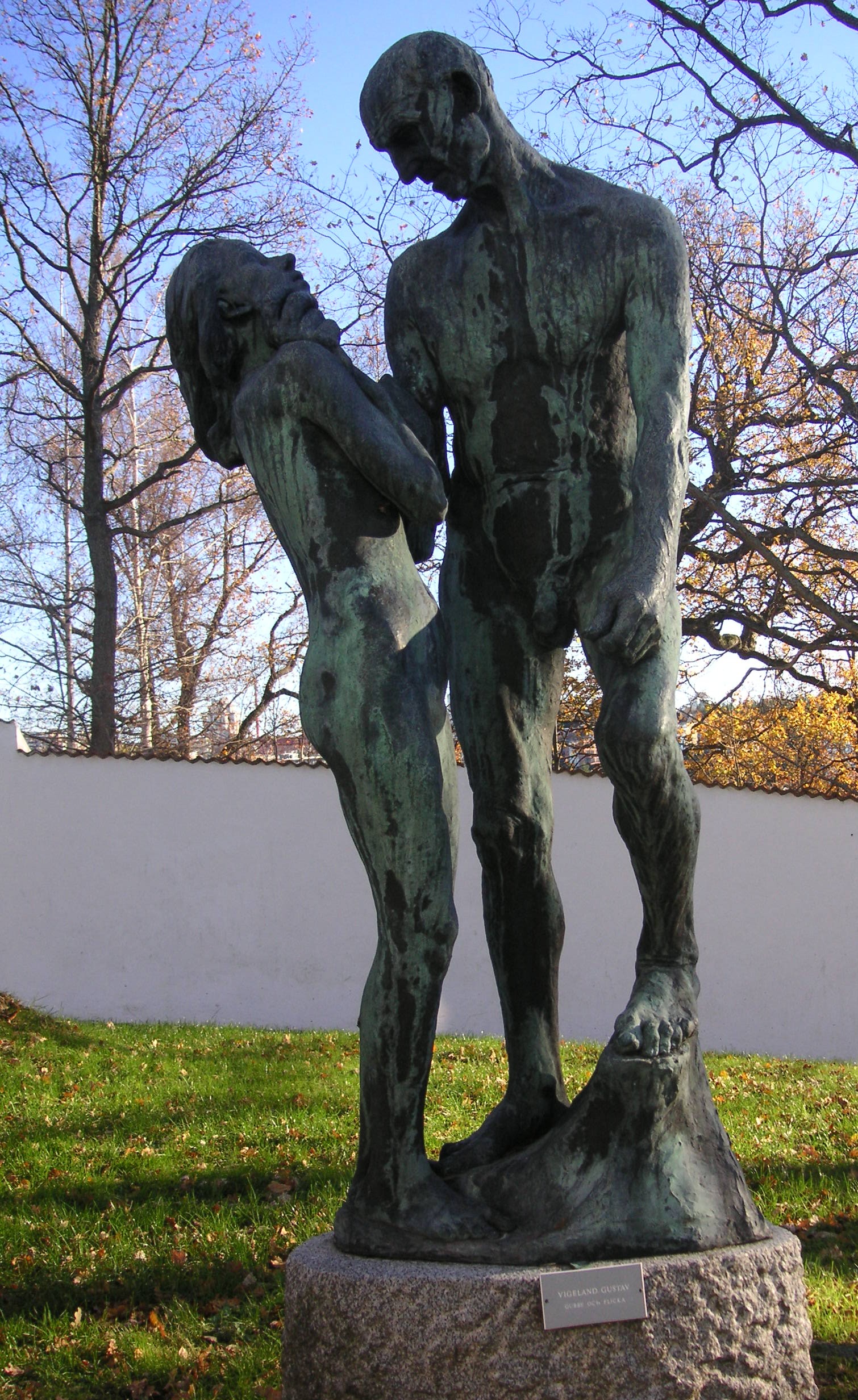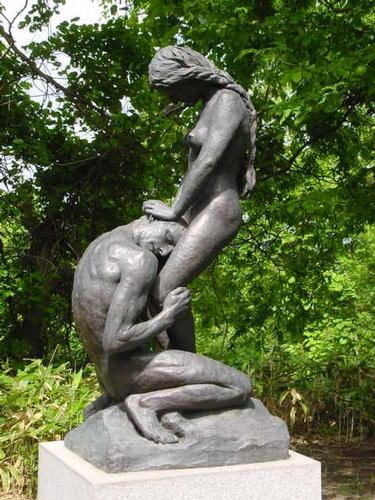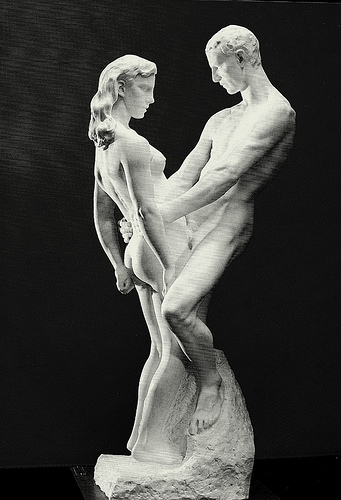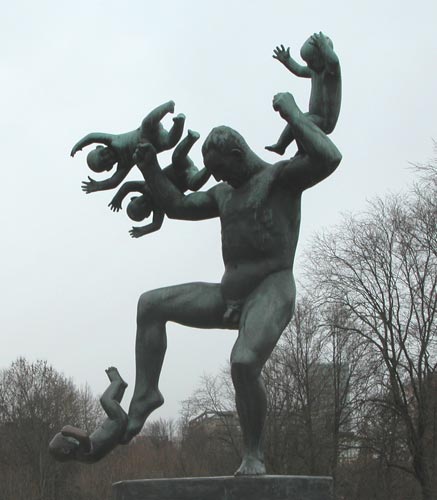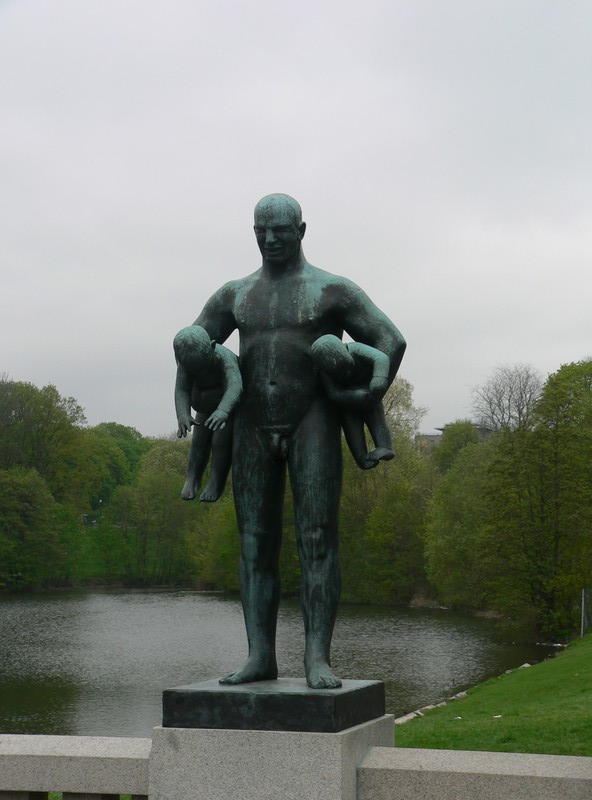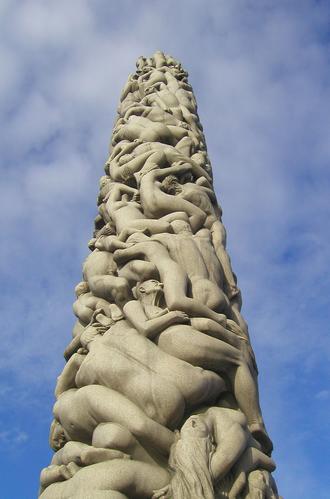<Back to Index>
- Mathematician Sir Andrew John Wiles, 1953
- Sculptor Gustav Vigeland, 1869
- Prime Minister of the United Kingdom George Canning, 1770
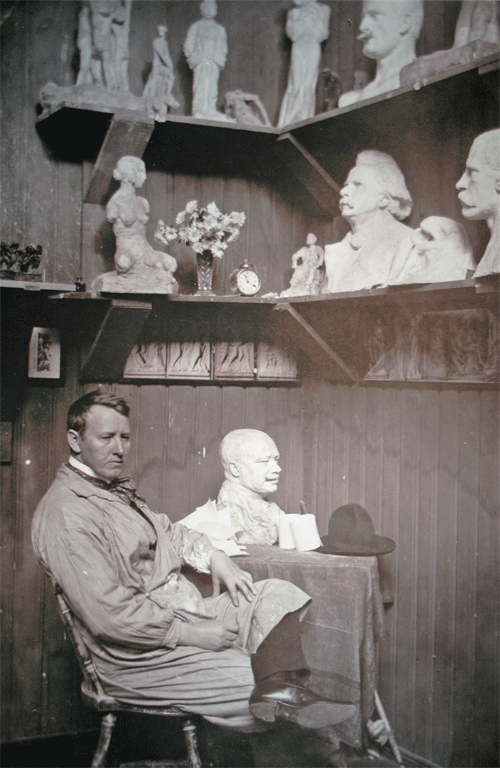
Gustav Vigeland (April 11, 1869 – March 12, 1943) was a Norwegian sculptor.
Gustav was born just outside Mandal, a small coastal town in the south of Norway, to a family of craftsmen and countrymen. As a youth, he was sent to Oslo where he learned to read and carve wood at a local school. However, the sudden death of his father compelled him to move back to Mandal to help his family. Gustav lived for a time with his grandparents that lived on a farm called Mjunebrokka in Vigeland, and later he took that name as his last name.
He returned to Oslo in 1888, this time determined to become a professional sculptor. Vigeland came to the attention of sculptor Bryunjulf Bergslien, who supported him and gave him practical training. The following year he exhibited his first work, Hagar and Ishmael.
Vigeland spent the years 1891 to 1896 in several voyages abroad, including Copenhagen, Paris, Berlin and Florence. In the French capital he frequented Auguste Rodin's workshop, while in Italy he experimented with ancient and Renaissance artworks. In these years the themes that would later dominate his inspiration: the death and the relationship between man and woman first appeared. He held his first personal exhibitions in Norway in 1894 and 1896, which received notable critical praise.
His brother, Emanuel Vigeland, was a painter. Until 1902 Vigeland was engaged in the restoration of the Nidaros Cathedral in Trondheim. The contact with Mediaeval art contributed to another frequent theme in Vigeland's art, the dragon as symbol of sin but also as a nature force, fighting against man. Back in Oslo, he obtained from the town an abandoned studio in which to work. In 1905 Norway became independent from Sweden:
Vigeland, considered the most talented Norwegian sculptor, received
numerous commissions for statues and busts celebrating renowned
compatriots like Henrik Ibsen and Niels Henrik Abel. In
1906 Vigeland proposed a chalk model for a monumental fountain which,
according to the initial will of the Oslo commune, had to decorate the
square in front of the National Parliament. His work was generally
welcomed, but the location created a dispute: the work completion was
therefore postponed. In the meantime Vigeland enlarged the original
project, adding several sculpture groups and, in 1919, a high granite column. In 1921 the City of Oslo decided to demolish the house where Vigeland lived and build a library.
After a long dispute, Vigeland was granted a new building from the
city, where he could work and live: in exchange, he promised to donate
to the city all his subsequent works, including sculptures, drawings,
engravings and models. Vigeland moved to his new studio in Nobels gate in 1924. It was located in the vicinity of Frogner Park,
which he had chosen as the definitive location for his fountain. In the
following twenty years Vigeland was devoted to the project of an open
exhibition of his works, which later turned into what is universally
known as Vigeland Park. Vigeland
lived and worked in Nobels gate until his death in 1943. His ashes are
still preserved there, in the belfry. According to the agreement with
the city of Oslo, the building became the Vigeland Museum, and houses various works by the artist, along with the plaster models of the Vigeland Park sculptures.
